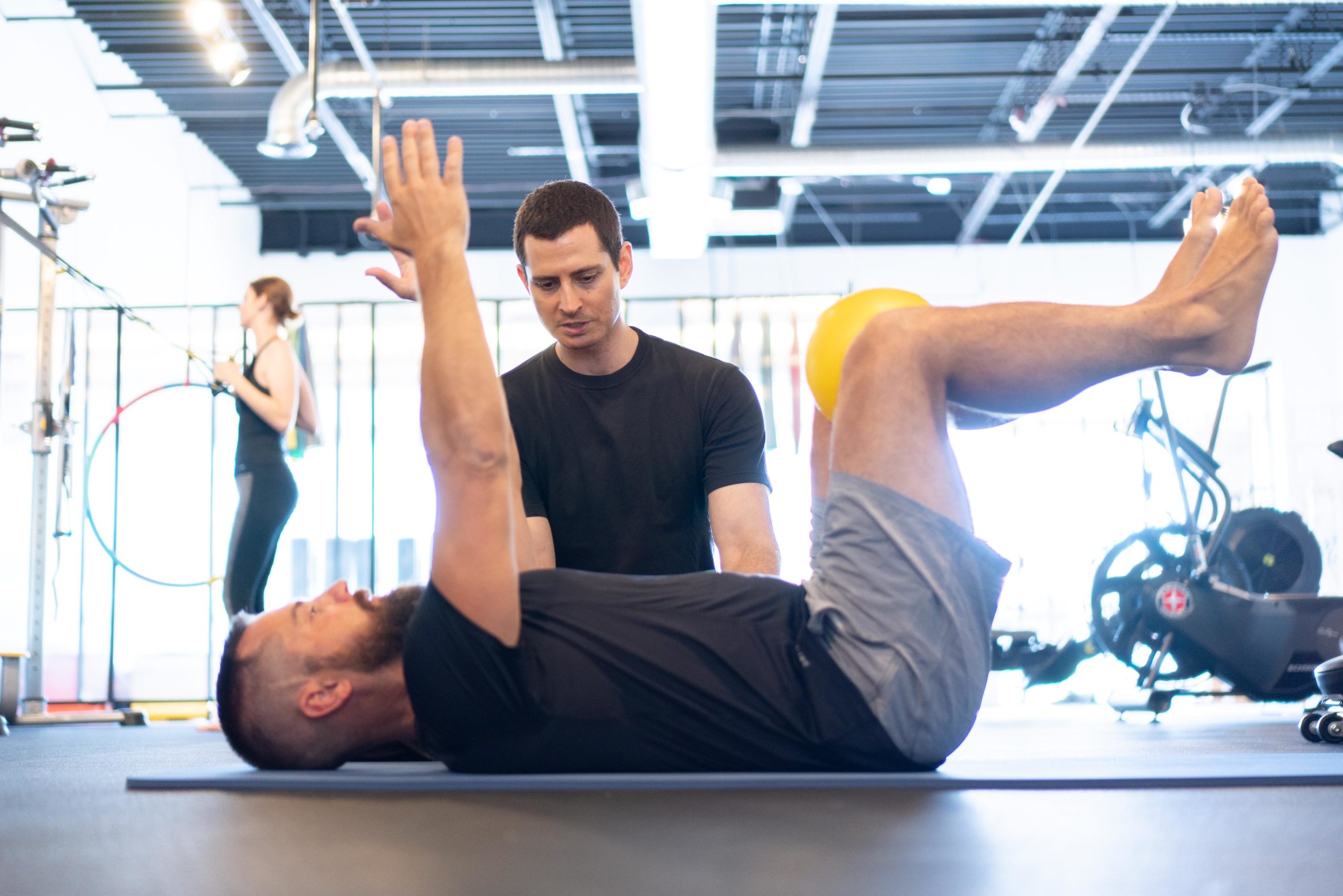What is Dynamic Neuromuscular Stabilization?
Dynamic Neuromuscular Stabilization (DNS) is a rehabilitative exercise methodology that was established by neurologists and physiatrists in Prague. They studied the development of motor control in children from the newborn stage through the first year of life.
Using the principles observed in early development, DNS aims to reestablish the innate neuromuscular patterning programmed into our central nervous systems (CNS).
Baby, We Were Born This Way
If you’ve had the joy of watching a baby grow and develop, you’ve seen their incredible movement evolution.
Babies are inherently born with a 12-month fitness program ingrained in their CNS. Newborns have very little control over their limbs and rely on reflexes to navigate their first couple months of life.
By month 3, babies gain more control over their limbs through the development of intra-abdominal pressure (IAP).
Intra-abdominal Pressure (IAP)

That adorable round belly most babies have in common is not just cute…It’s a key to their motor development and control.
DNS defines this as intra-abdominal pressure, which is the pressure contained within the abdominal cavity. The diaphragm contracts downward on inhalation (roughly 2 1/2 inches) pushing the abdominal contents and ribcage outward, increasing IAP.
An increase in abdominal pressure creates spinal stability and reduces compressive forces on the spine, freeing the extremities and superficial musculature to move with ease.
When a baby is prone (“tummy time”), proper intra-abdominal pressure allows the baby to distribute load evenly throughout their spinal extensors. This stable spine allows them to start using their limbs for reaching rather than support.
The Progression:
Once intra-abdominal pressure is established, babies are able to turn onto their side, usually around 4 to 5 months old. Side-lying strengthens the lateral musculature.
Around 6 months, babies have strengthened their abdominal wall and spinal extensors enough to sit upright. Around 8 or 9 months, the contralateral (crossbody) connection established at around 4 and a half months prepares the baby’s oblique muscles for crawling.
Babies progress to stepping one foot forward from a quadruped (hands and knees) position, where they are able to load the foot and pull themselves up to standing. After the feet have enough practice sensing load, the contralateral patterning developed in crawling evolves into walking.
Eventually, after roughly 1 year, babies take their first steps and within days, there’s no stopping them! The physical progression through their first year is a beautifully designed fitness program–and they don’t need trainers guiding them through each step!
How Does This Apply to Adults?
You may be thinking to yourself, “Okay, I did the baby thing. I rolled over. I crawled. I learned how to walk, so what? Why should I care about this now?”
Somewhere along the way most of us lose our sense of expansive diaphragmatic breathing, intra-abdominal pressure, and deep core stabilization.
Reconnecting with the motor control systems programmed into our CNS is a powerful tool for injury rehab and prevention, improving core function, and optimizing your overall fitness output.

How Do We Use DNS at Sense Movement & Exercise?
Sense Movement & Exercise is currently the home of the only two trainers in Tennessee with DNS Exercise Trainer certifications.
DNS is not the only methodology we ascribe to, but we have personally experienced a profound improvement in our movement quality and have seen how effective it has been helping clients with theirs.
At Sense, DNS fundamentals will be woven into your assessment and programming. It could be focused diaphragmatic breathing lying on your back or maintaining IAP during a squat or lunge. Our goal is to teach you how to sense the technique in your body and replicate what you learn outside the studio in daily life.
Book a session or class today and experience the benefits of Dynamic Neuromuscular Stabilization for yourself!
